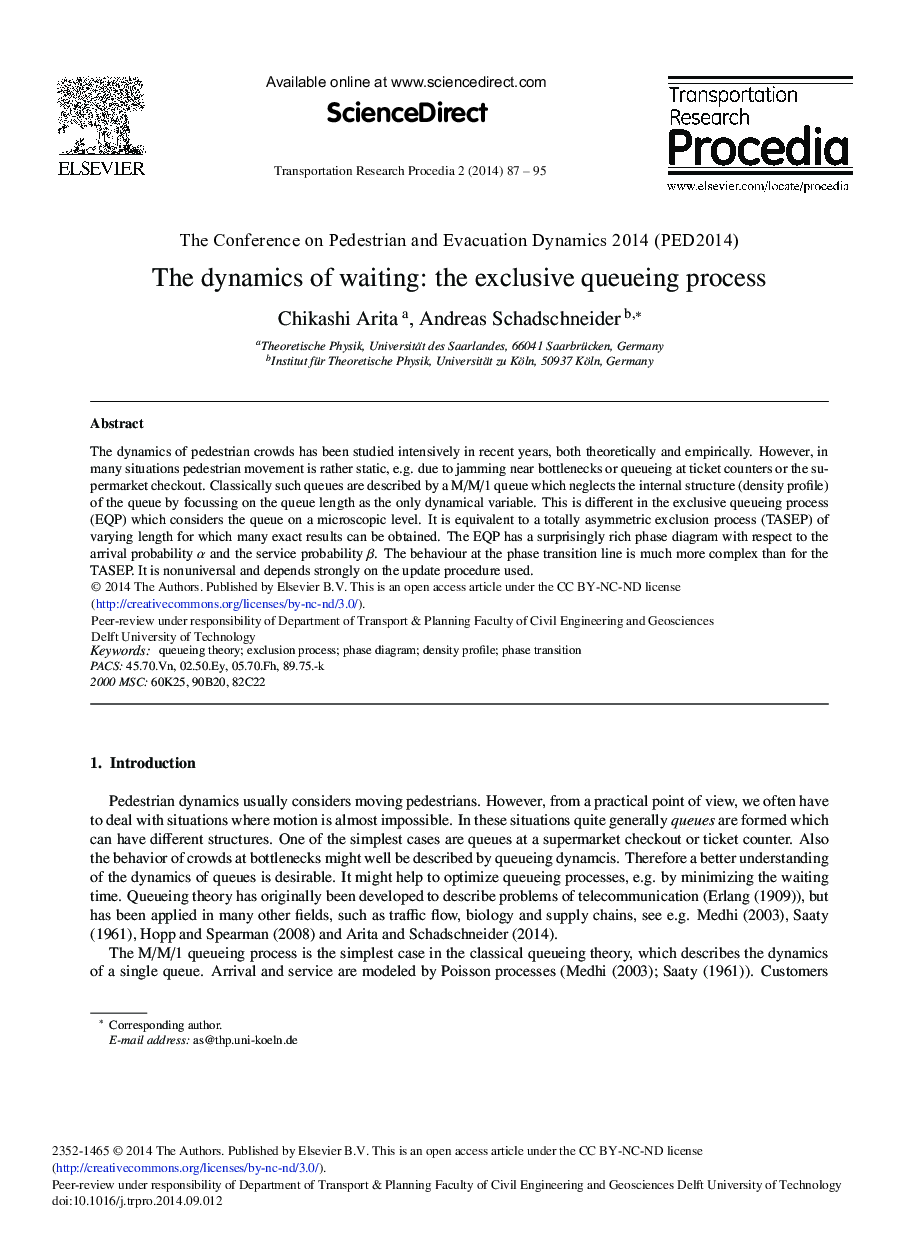| Article ID | Journal | Published Year | Pages | File Type |
|---|---|---|---|---|
| 1106669 | Transportation Research Procedia | 2014 | 9 Pages |
The dynamics of pedestrian crowds has been studied intensively in recent years, both theoretically and empirically. However, in many situations pedestrian movement is rather static, e.g. due to jamming near bottlenecks or queueing at ticket counters or the su- permarket checkout. Classically such queues are described by a M/M/1 queue which neglects the internal structure (density profile) of the queue by focussing on the queue length as the only dynamical variable. This is different in the exclusive queueing process (EQP) which considers the queue on a microscopic level. It is equivalent to a totally asymmetric exclusion process (TASEP) of varying length for which many exact results can be obtained. The EQP has a surprisingly rich phase diagram with respect to the arrival probability α and the service probability β The behaviour at the phase transition line is much more complex than for the TASEP. It is nonuniversal and depends strongly on the update procedure used.
